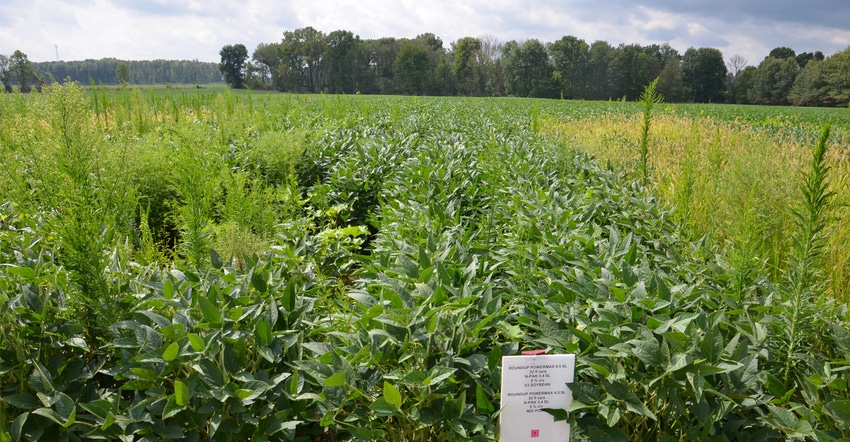December 25, 2017

Dicamba herbicides are one weapon growers need in their arsenal to control tough, resistant weeds. Bill Johnson, Purdue University Extension weed control specialist, says there aren’t promising new active ingredients in the pipeline. Instead, growers will rely on the weapons they have. One of those is dicamba products sprayed over Xtend soybeans.
The problem growers and industry face together heading into 2018 is figuring out how to carry out the fight against weeds while minimizing off-site movement and damage to sensitive crops. In Johnson’s estimation, the battle against weeds in 2017 was encouraging, but problems with off-target movement are heading the wrong direction.
“We have to realize we’re all in this together,” he says. “If we have another year like 2017 in terms of off-site movement, we may not be talking about dicamba a year from now, headed into 2019.”
That’s because the U.S. EPA granted a two-year registration for dicamba herbicide products for use on Xtend soybeans. The label will be reviewed after the 2018 season. There’s no guarantee EPA will issue new registration if major problems with off-site movement continue.
Industry side
The companies that make these products worked with EPA in the fall of 2017 to make changes to the labels that should help reduce off-target movement. The three new dicamba soybean herbicides are now restricted-use products, and anyone applying them in 2018 must have training specifically for applying dicamba. In Indiana, that training will be supervised by the Office of the Indiana State Chemist.
While cleaning out his desk recently, Johnson ran across literature from the late 1990s when glyphosate was launched. He notes that official company recommendations were to use the products without residual herbicides. The literature also indicated that weed resistance wouldn’t develop.
Everyone knows how that turned out.
“Companies have learned and are taking a much more positive approach this time,” Johnson says. “They’re recommending residual herbicides and stressing that multiple modes of action be applied to slow down resistant weeds.”
One of the most contentious pieces of the dicamba story between university specialists and companies concerns whether volatilization is involved in some off-target movement cases. Researchers didn’t get a chance to look at volatilization with these new products in many cases until this year, when they could buy the product and do tests. It’s still an area where not all parties agree, and which must be overcome if agriculture is going to win the fight to keep this weapon going forward.
Grower’s role
If you raise soybeans and want to use these products, you’re in the fight, as well. In fact, you’re on the firing line, right where the products are applied and the most critical decisions must be made. Extension specialists realize staying on the label isn’t easy and will be even tougher this year, since the new label limits times of application, reduces wind speeds and makes other changes. There will likely be fewer hours to spray and stay within label.
Johnson suggests rethinking how you use these products. “We believe part of the answer is using them very early post[emergence], and staying away from making applications on warm days in mid- to late June, when conditions are right for off-target movement onto sensitive crops nearby,” he concludes.
Comments? Email [email protected].
You May Also Like




